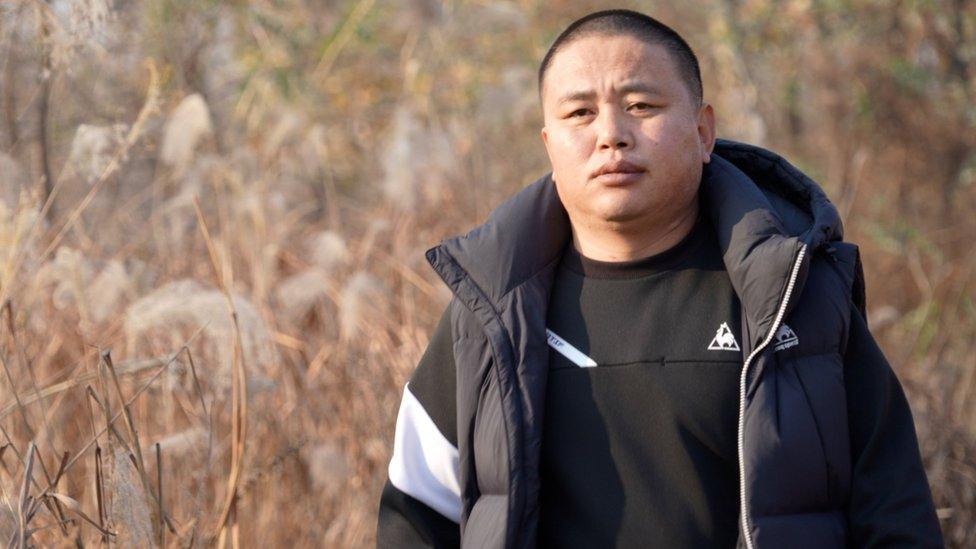The hidden village just metres from North Korea
- Published
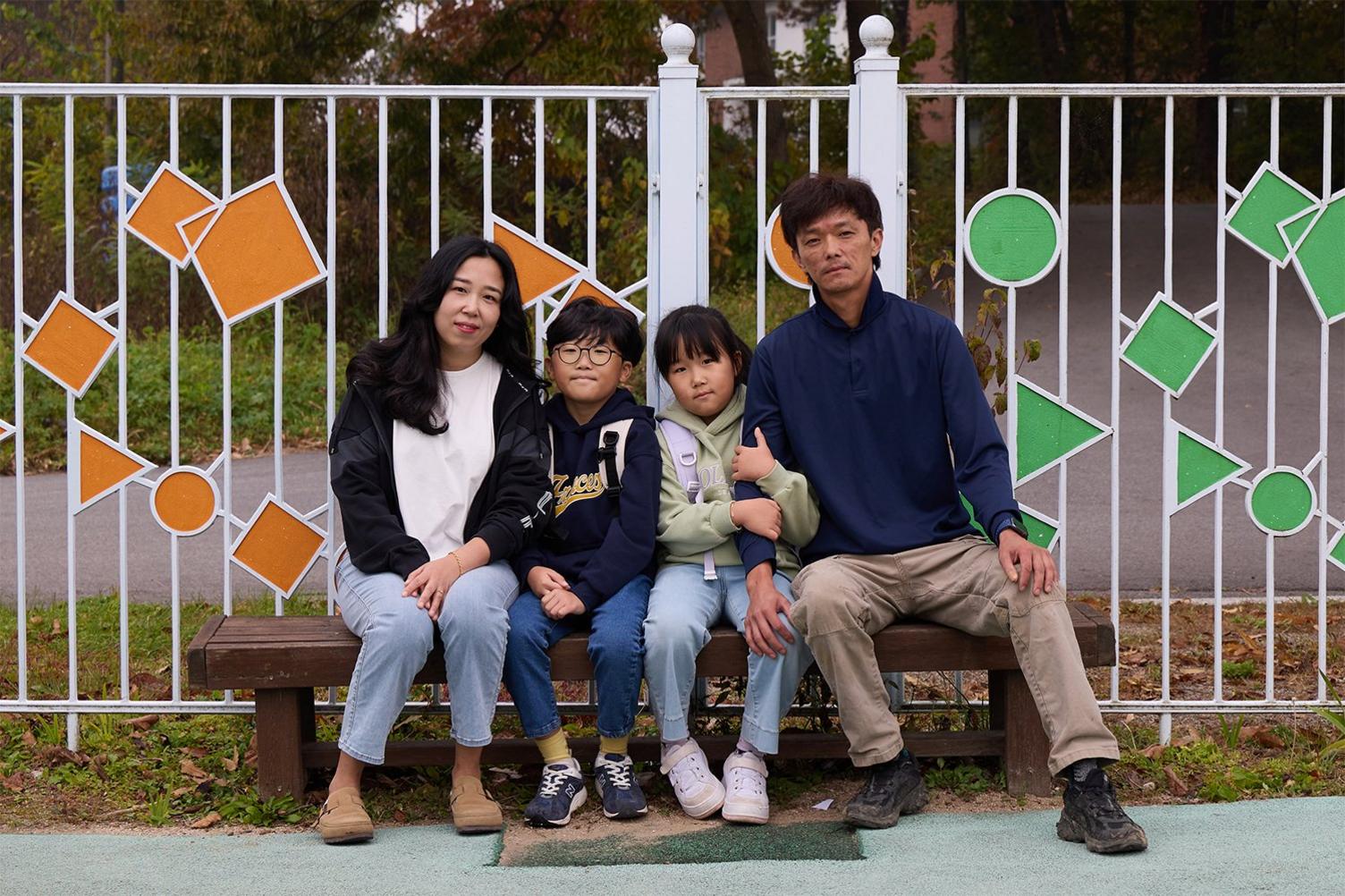
Gyung-ho, Mi-sun and their children are among the youngest residents of a South Korean village inside the Demilitarised Zone
Gyung-ho and Mi-sun's is a classic love story.
They locked eyes at a party, and immediately felt a spark. They quickly fell in love, and Gyung-ho asked Mi-sun to move in with him.
But there was a catch.
Gyung-ho lives in the only South Korean village in the Demilitarised Zone (DMZ), mere metres from North Korea. Mi-sun's father was horrified. He was so worried he couldn't sleep after visiting them for the first time. "But really, the toughest thing about living here is not being able to get fried chicken delivered," Mi-sun jokes. That, and the strict night-time curfew.
Contrary to its name, the strip of no-man's land separating North and South Korea is one of the most militarised places on earth. Encircled by barbed wire and carpeted in mines, hundreds of thousands of rounds of artillery point in both directions. It was created in 1953, after the Korean War, to keep the two armies apart. Hundreds of villages had to be cleared, forcing thousands from their homes.
But two villages were allowed to remain - Freedom Village, to the south of the ceasefire line, and Peace Village to the north.
These small beacons of hope were supposed to signal that the DMZ was temporary and one day soon Korea would be reunified. But 70 years on, the prospect of unification seems slim, and the village's numbers are dwindling, as the old die and the young leave, making Gyung-ho and Mi-sun, with their two small children, unusual.

Living Between Enemy Lines, external
A rare insight into a village which sits within Korea's Demilitarised Zone.

Living on the doorstep of one of the world's most hostile states carries significant risk. Mi-sun recalls the eventful day last year when the US soldier, Travis King, ran across the border from South Korea into the North, while on a tour of the DMZ. Her children were immediately sent home from school, and the residents put under lockdown.
"Things like this happen every few years and I'm reminded I'm living in this kind of village," she says.

To reach Freedom Village, known in Korean as Taesung, we have to pass through several checkpoints. From there we drive north, beyond rows of armoured tanks, until the land opens out to reveal dozens of golden rice fields and a small cluster of homes.
There are no restaurants, medical facilities, nor a single shop, and the villagers, many now in their 80s and 90s, live under the guard of more than 800 soldiers.
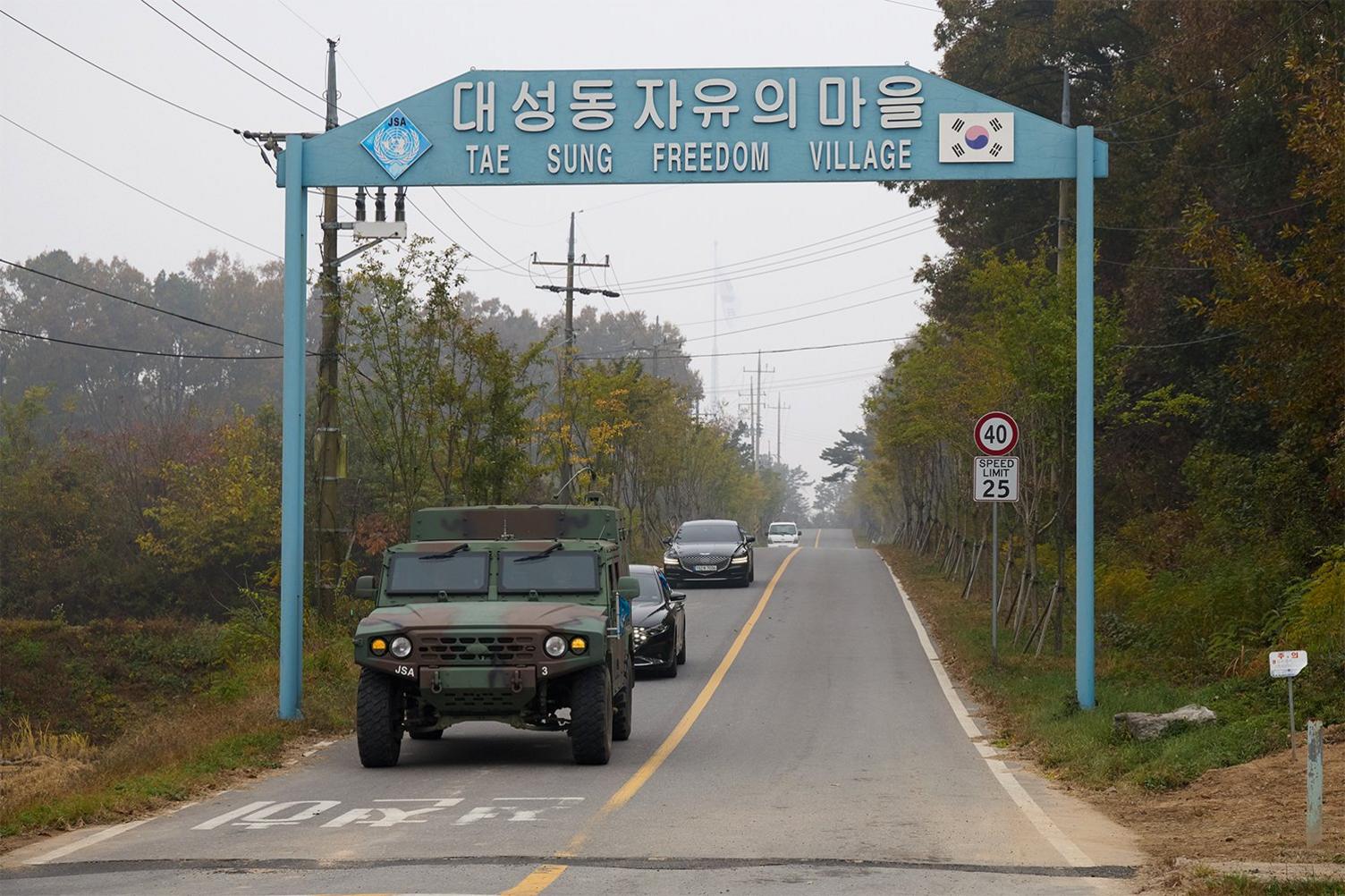
This blue archway marks the entrance to Taesung Freedom Village
In a peaceful courtyard, a tiny elderly woman stands swirling a batch of home-made acorn jelly, her back hunched from decades of farming. A striped sunhat protects her weathered face and wild hair.
Kim Dong-rae was born on this land years before the war would decide its peculiar fate.
She remembers bullets streaking past her windows at night, as the village was caught in the crossfire.
Watch: Living between enemy lines inside Korea’s DMZ
"Don't get me started on that terrible war," she says, gesticulating energetically. At 85, she has outlived two of her six children, as well as her husband who died young after being shot in the stomach by a North Korean soldier.
Raising her children alone, in a perpetual state of high alert, was stressful and lonely, she says, though life became easier as the years passed. Initially there was only one bus a week to take them out of the DMZ, meaning when she left for a weekend of drinking and dancing, she'd be stranded outside until the following Friday.
But now there are three buses a day, and with her partying days behind her, she only ventures out once every two months to get her hair done.
"I wish I could get it done more, but it's a hassle," she shrugs.
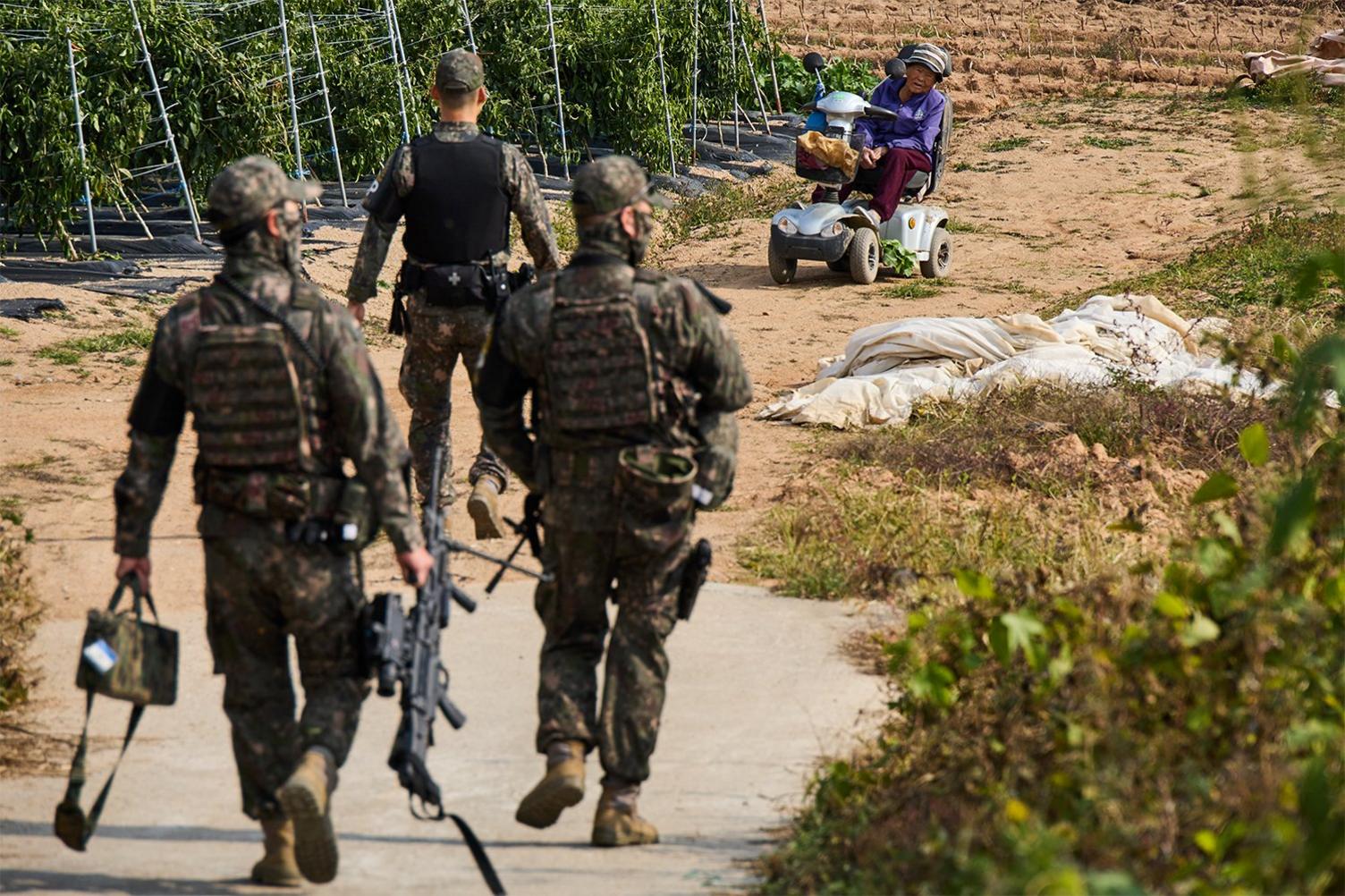
Kim Dong-rae goes foraging for acorns to make her jelly
Once, while foraging for acorns to make her jelly, Kim Dong-rae spotted North Korean soldiers on the southern side of the line. Frightened, she screamed and ran, and with good reason.
In 1997, her friend Mrs Hong was kidnapped by the North Koreans, after accidently straying over the border while collecting acorns, and was held captive for three days.
Now Mrs Kim is escorted by armed soldiers on most of her outings, meaning she worries less. "We and the North Koreans, we live with our backs to each other," she says.

The village is run by the United Nations Command - a US-led army, comprising soldiers from more than a dozen countries. The force is responsible for ensuring the armistice holds. There has never been a peace deal between North and South Korea, and the residents of Taesung are on the front line of flaring tensions.
In November, both sides rearmed their troops inside the DMZ, after a peace-keeping deal broke down. Then, at the start of this year, the North Korean leader Kim Jong Un branded South Korea his number one enemy, and declared that the peaceful reunification of the two countries had become impossible.
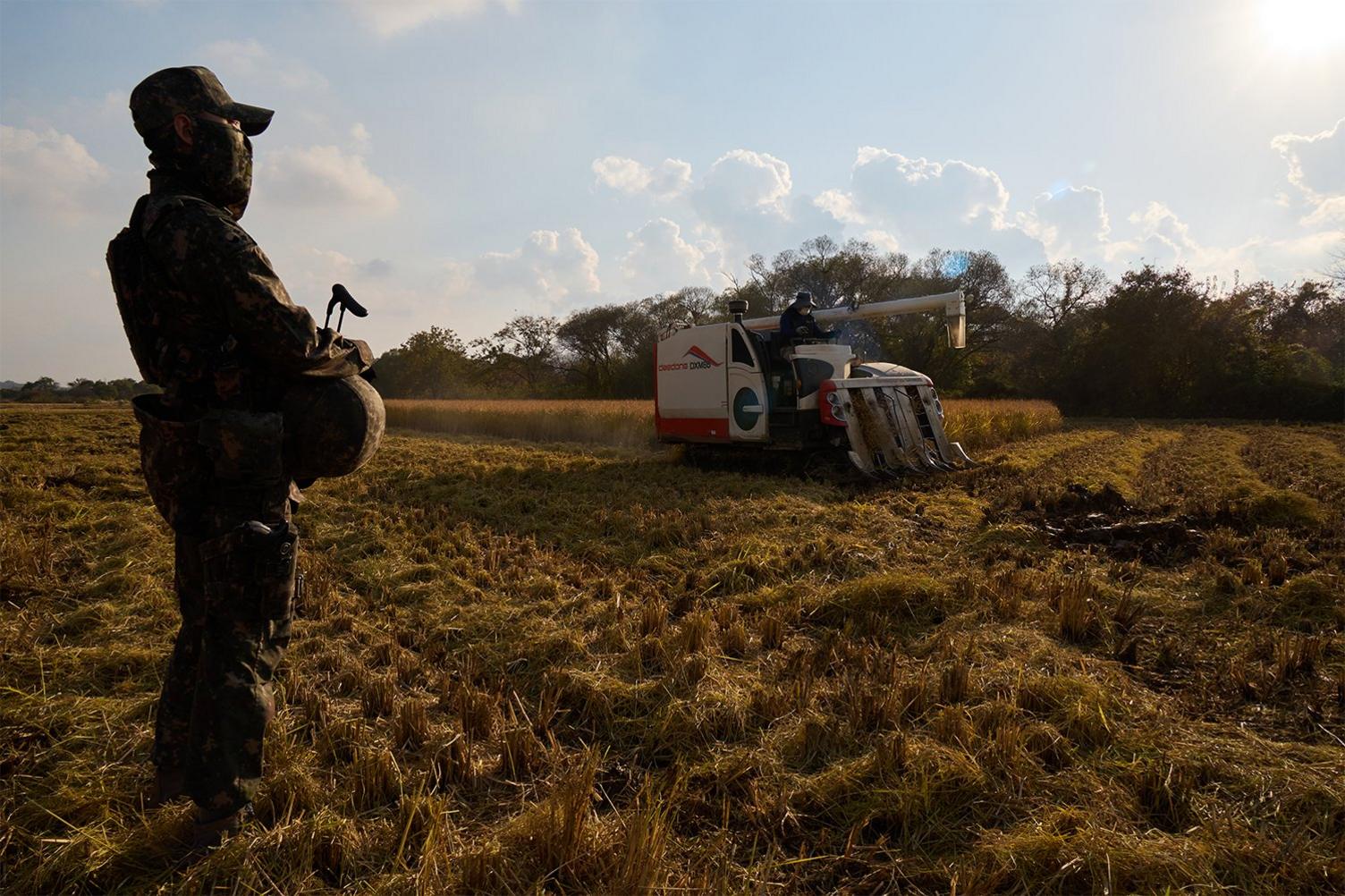
Soldiers guard the villagers while they farm along the North Korean border
"The village is not dangerous day to day, but the risk is incredibly high," says US Lieutenant Colonel Chris Mercado, who leads the elite battalion of soldiers that secures the village. "There is nowhere like this anywhere else in the world."
Lt Col Mercado's soldiers patrol day and night. They even accompany the residents as they farm. They are preparing to take us to the fields close to the border when we are alerted to a potential threat.
A North Korean family has just escaped the country and crossed over to South Korea by sea. The border guards in the North will be on high alert and likely watching our every move we're told, and our presence might spook them. So, for now, we must stay where we are. It is a reminder of how unpredictable life in the DMZ can be.

Once the risk has subsided, we walk out to a field which runs along the line dividing the North and South. As a resident ploughs the last of his season's rice, two soldiers with machine guns stand guard, dressed head to toe in camouflage, their eyes scanning for movement in the north.
There are no fences or barriers physically separating the village from North Korea. Only a rusty sign demarks an invisible line, along with a dense tangle of trees and bushes. When the noise of the plough subsides, we hear the faint sound of soldiers singing on the northern side.
"It always breaks my heart when I come here," says the mayor of Taesung, Kim Dong-gu. "We are one people, yet we can't talk to each other, we can only stare from afar."
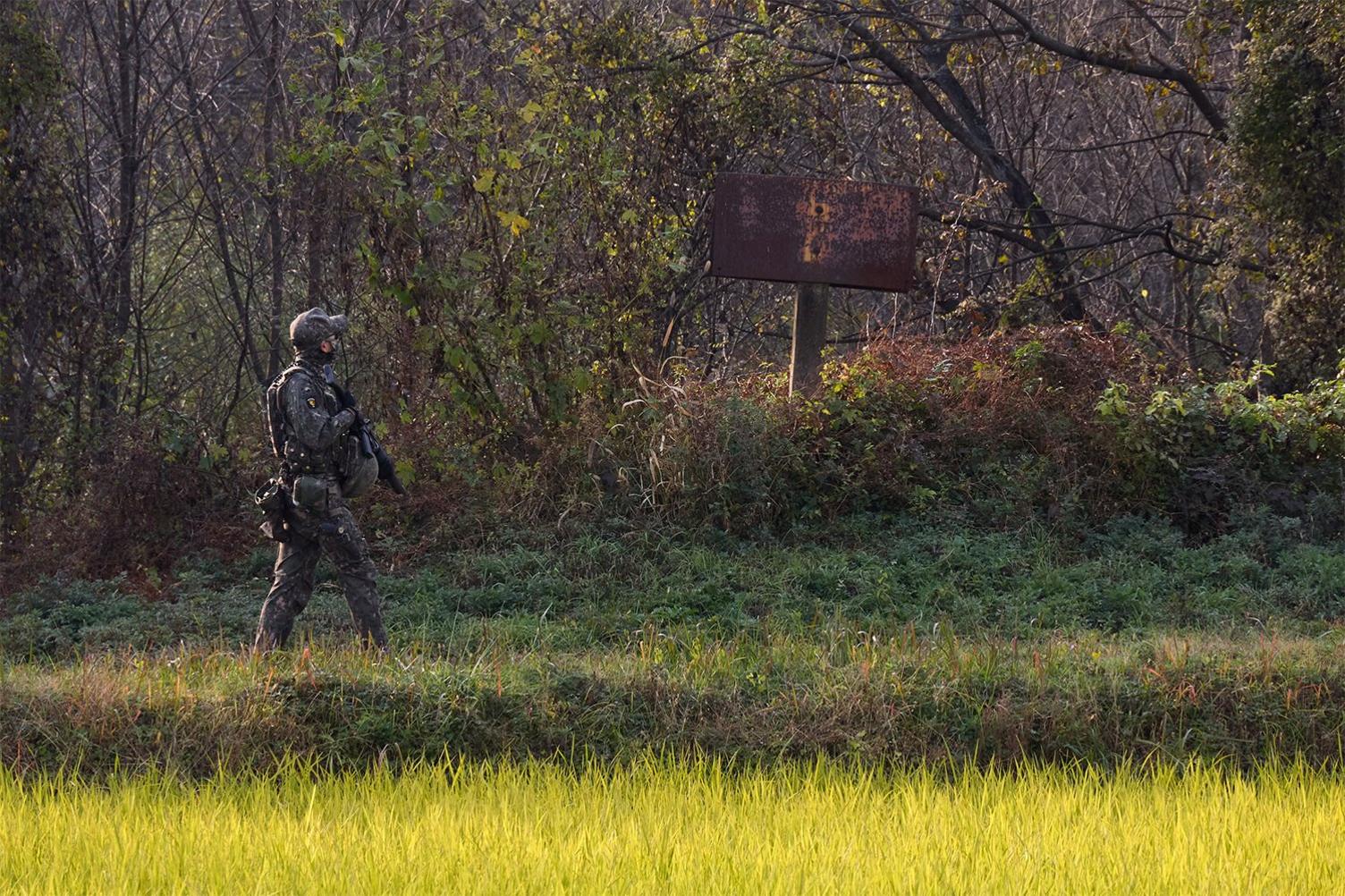
A rusty sign marks the border between North and South Korea
During the day, only the sounds of tractors or barking guard dogs puncture the deceiving serenity. Mayor Kim worries constantly about his villagers' safety. "It might seem peaceful to you," he says, "but there is an unseen eeriness, an innate fear."
As darkness falls, the residents disappear into their homes. They need permission to leave after 7pm and are not allowed out after midnight. The soldiers embark on their nightly rollcall, knocking door to door, but it is a formality. The network of surveillance cameras means they already know where everyone is.
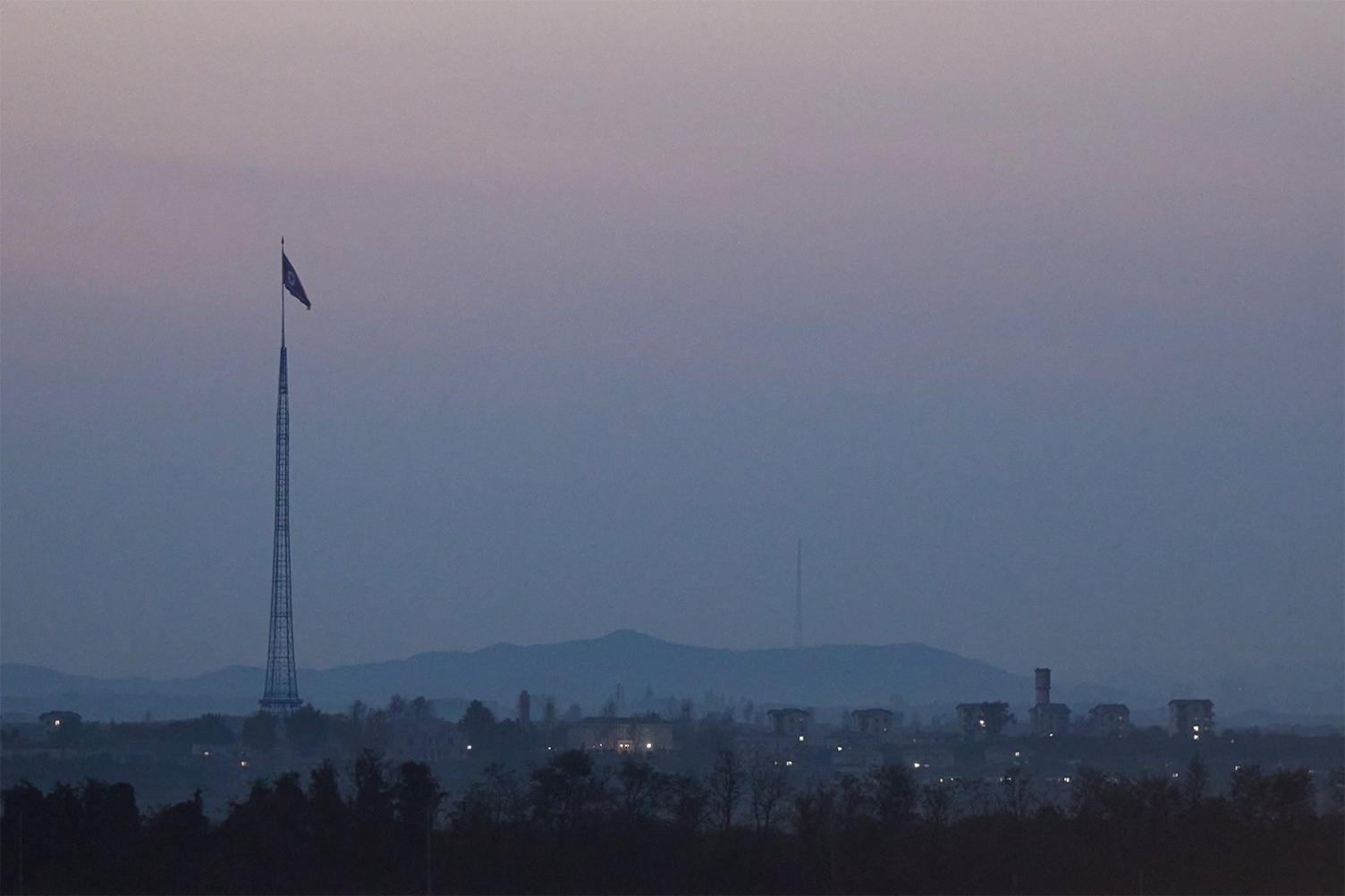
At night villagers can see the lights of North Korea's "Peace Village"
To offset these rules and risks, the villagers are offered some major perks to convince them to stay. They do not pay taxes or rent, and their extreme isolation comes with an abundance of farmland. Any crops they cannot sell, the government will buy.

It is a good enough deal for Kim Kyung-rae, who took up arms aged 16 to defend the village during the war. "I think you can reasonably say this is paradise on earth," he says smiling, as we sit on his porch to catch the evening sun.
The 87-year-old boasts that not only is he one of the richest famers on the Korean peninsula, but he has world-class security looking after him.
But this has not stopped him from installing his own CCTV cameras, to scan for North Korean intruders.
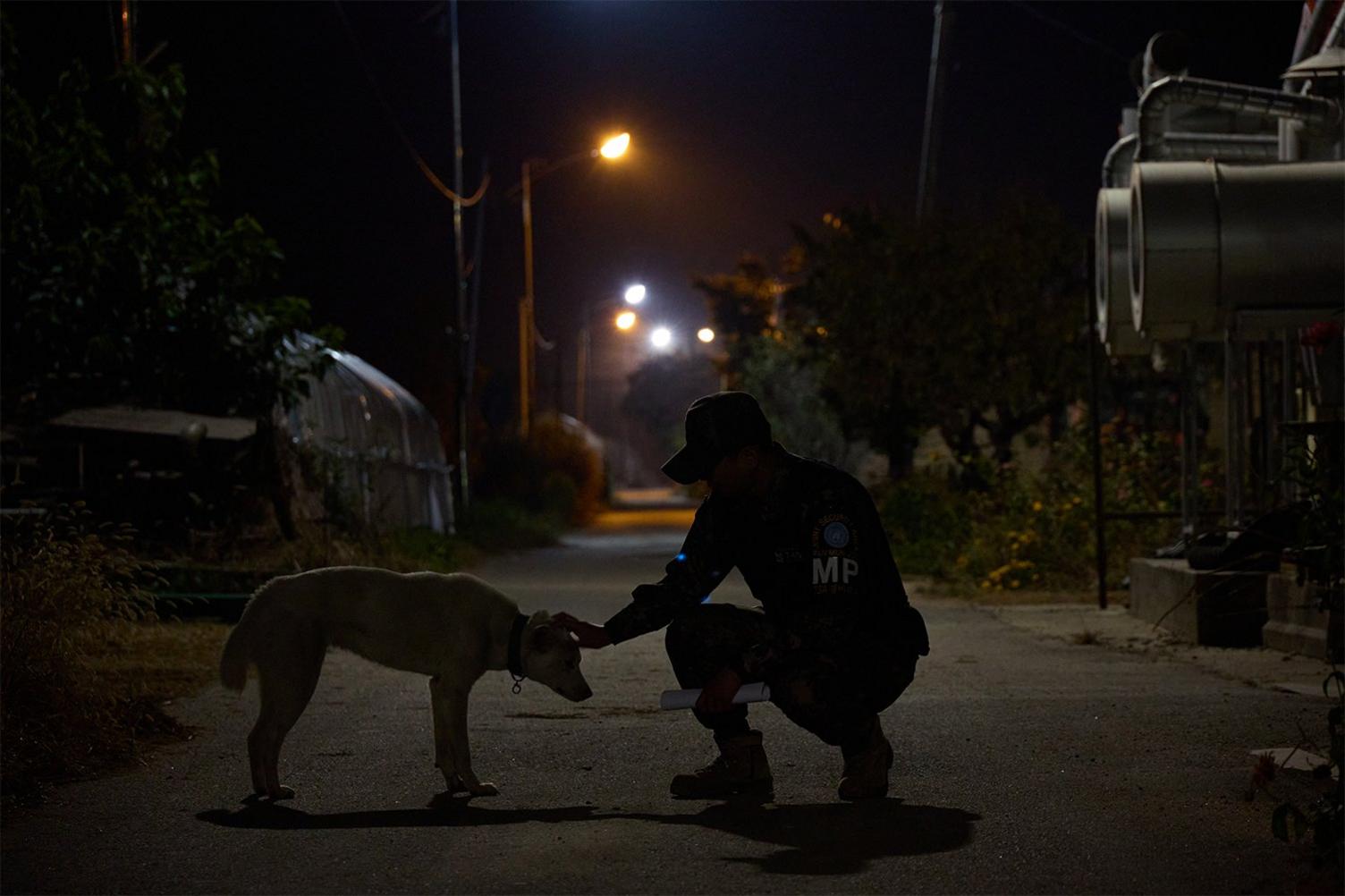
The soldiers patrol the village at night after the strict curfew
The symbolism of Taesung appears lost on Mr Kim and the other founding residents. They all say they have remained here out of habit and necessity - it is where they were born, and farming was all they knew. But while the generation who fought for this land is resigned to dying here, many of their children have moved on.
All six of Mr Kim's daughters left to continue their education, never to return. With each departure, his heart broke a little more.
During our trip, his third daughter, Yoon-kyung, paid him a visit. Affectionately she straightened his clothes and combed his hair. "Growing up, I felt this was a dangerous place, but I wasn't afraid," she said. "I just had no reason to come back."
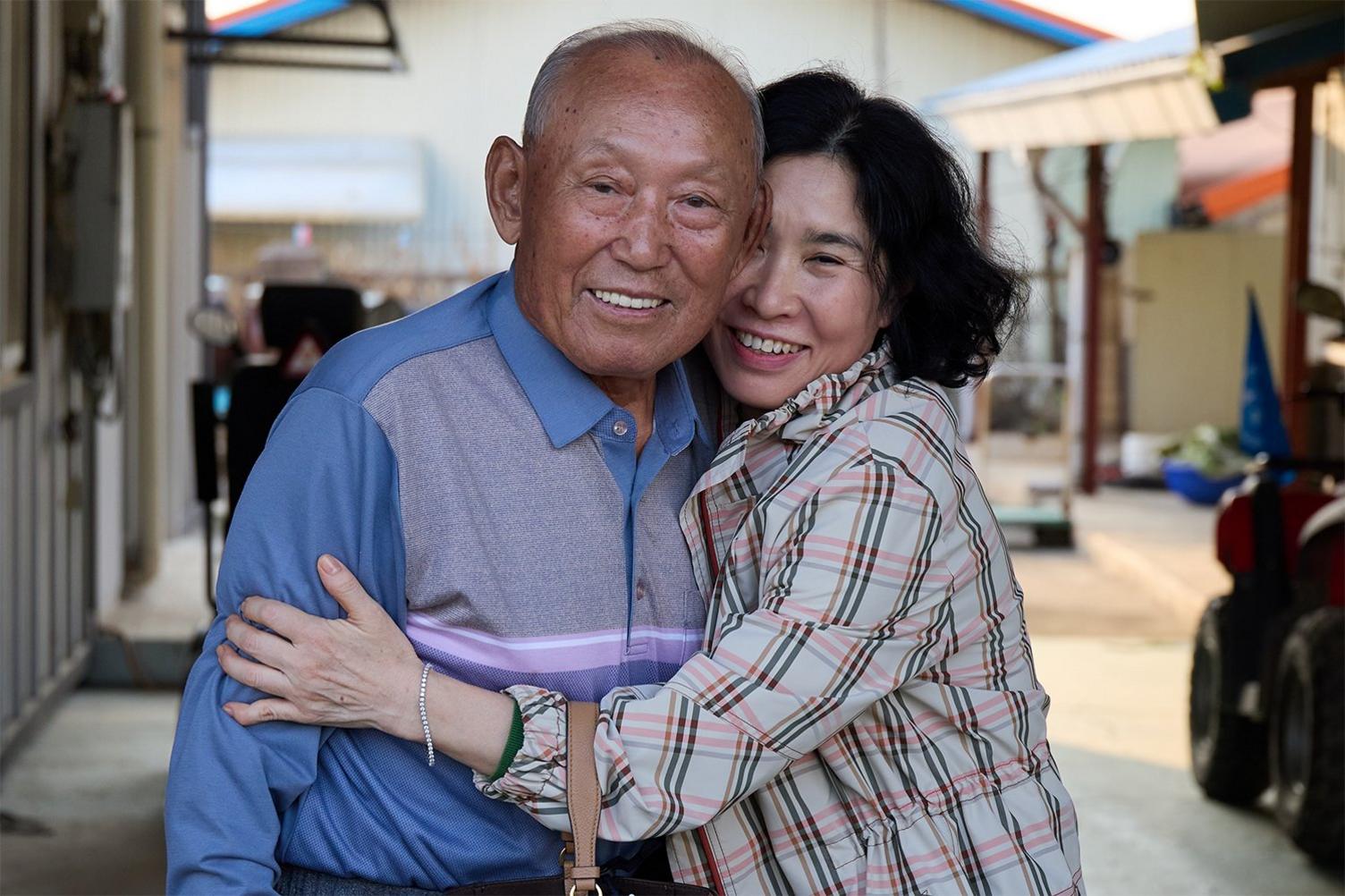
Kim Kyung-rae with his third eldest daughter Yoon-kyung, who has left the village
After university she met her husband, got a job, and the couple now live in Seoul with their children. For many years men were allowed to bring their partners to live in the village, but women were not, forcing them to leave for love.
The rules have since been updated but perhaps too late. Sleepy Taesung, with all its restrictions, can no longer compete with the bright lights and boundless opportunities of modern-day South Korea. Over the past decade its population has dropped by a third from 213 to 138, while the proportion of elderly residents has doubled.
There are only six students per class at the village's state-of-the-art primary school, which Gyung-ho and Mi-sun's children attend, and most of them are bussed in from outside the DMZ.
The couple's 10-year-old son seems unfazed by his surroundings. He wants to live in Taesung forever, he says, in part because it would exempt him from completing South Korea's mandatory military service - another of the village's perks.
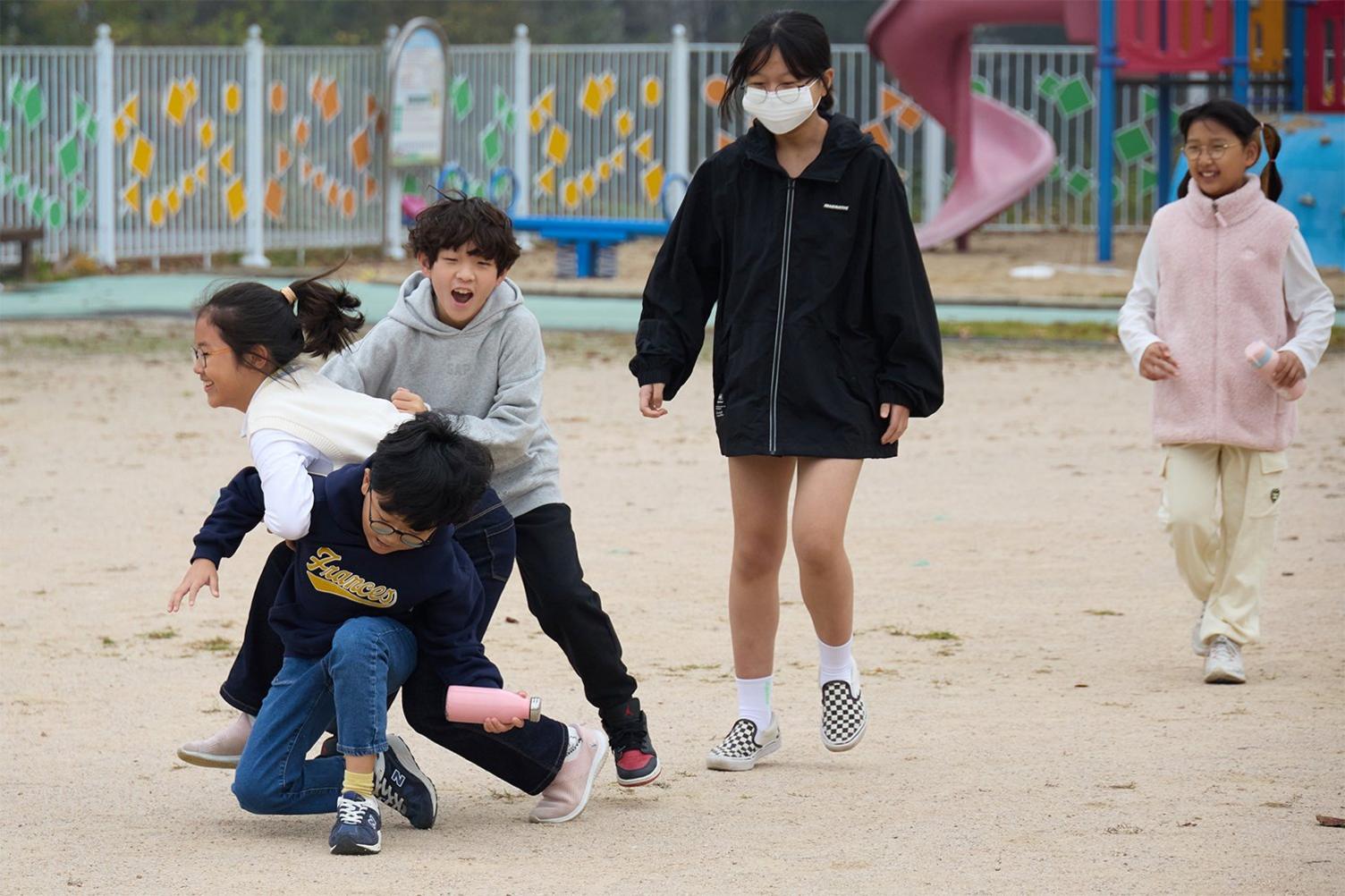
There are only a handful of children living in the village
But Mi-sun and Gyung-ho are resigned to their children leaving one day. They want them to travel and experience a world beyond the barbed wire. "It is asking a lot for young people to live here," Gyung-ho says, adding that the village would probably not exist in the future.

From the roof of the townhall, we are able to get a clear view into North Korea, and the Peace Village of Kijong, complete with its imposing 165-metre flagpole. Lt Col Mercado points to some of the buildings, explaining they are mere facades, with the windows painted on. The North Koreans are thought to have abandoned Kijong long ago.
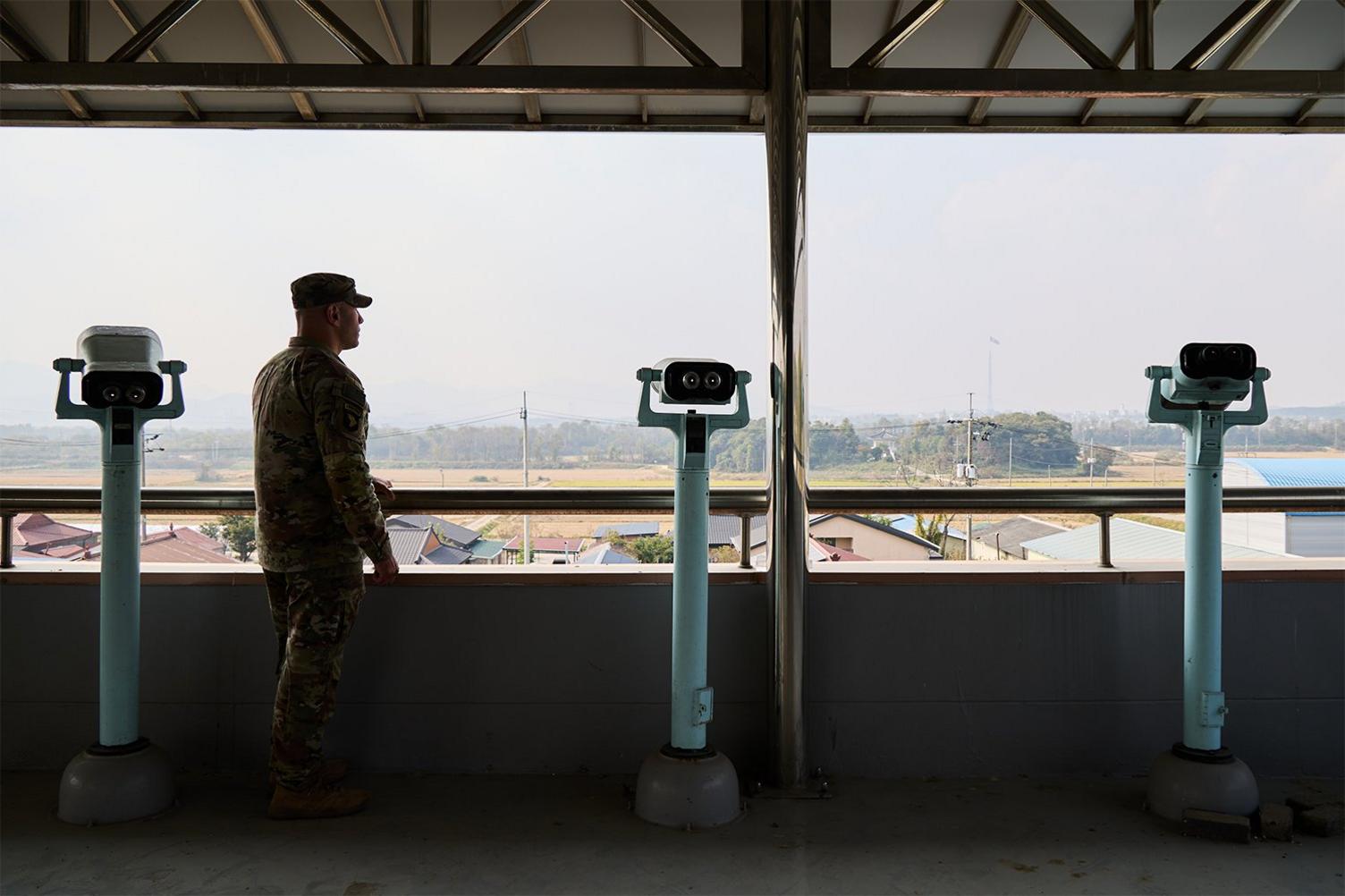
Commander Mercado looking out over the village from the townhall
Yet Lt Col Mercado and his team at United Nations Command are determined to keep Taesung running and are brainstorming ways to persuade people to stay.
One option is to reduce the number of nights the villagers must spend here to retain their residency, down from the current eight months.
Lt Col Mercado fears if they let the village vanish, it would signal that the South had given up on peace and reunification. "It would send a very strong message that the terms of the armistice are no longer being enforced," he says.
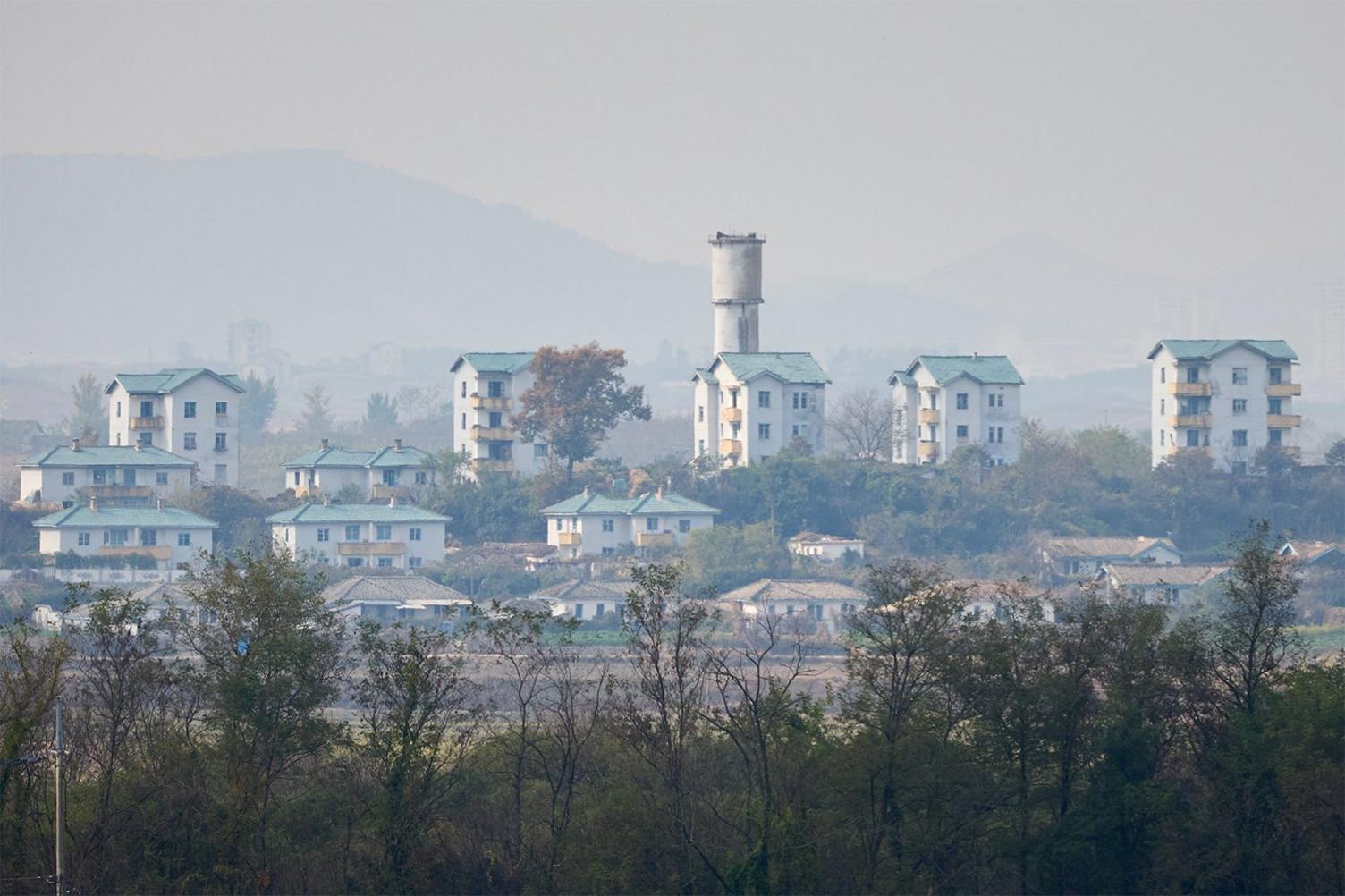
North Korea is thought to have abandoned its village inside the DMZ, Kijong, long ago
But as each year passes, reunification looks less likely. Not only has the North officially abandoned the policy, but an increasing number of South Koreans no longer believe it is necessary, or even want it. As this dream fades, it is getting harder to convince people to live on the front line of an unresolved conflict.
Kim Dong-rae says this will be the final year she makes her acorn jelly. Last week, she attended a friend's funeral. Afterwards another friend phoned and begged her to hold on. "It's just you and me left now," she said.
"I'm trying to hold on," Dong-rae tells me. "But at our age it's hard. I'll be gone, long before the village is."
Additional reporting by Hosu Lee and Leehyun Choi
All photographs by Shin Yong-ju
Related topics
- Published5 December 2023
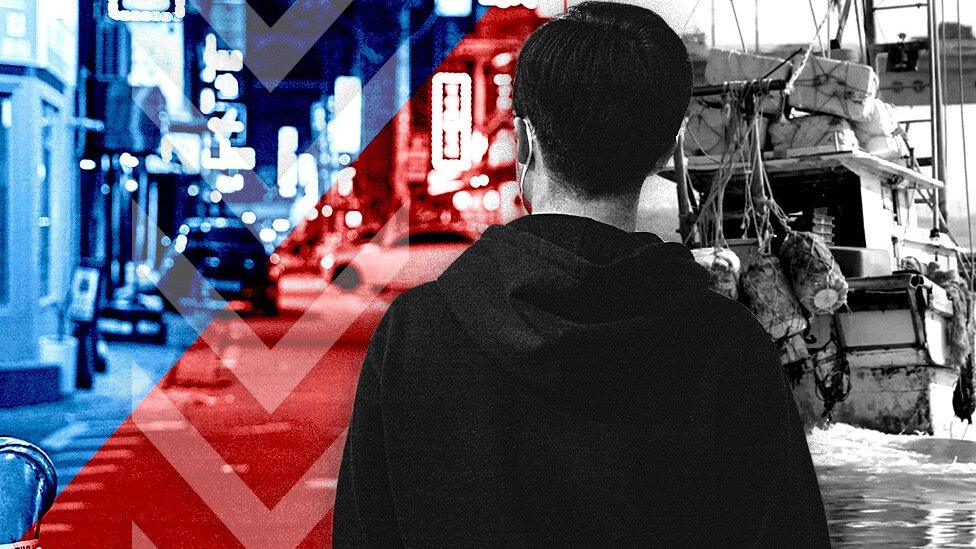
- Published30 January 2024
